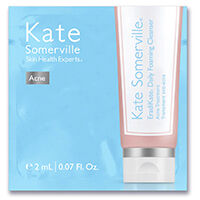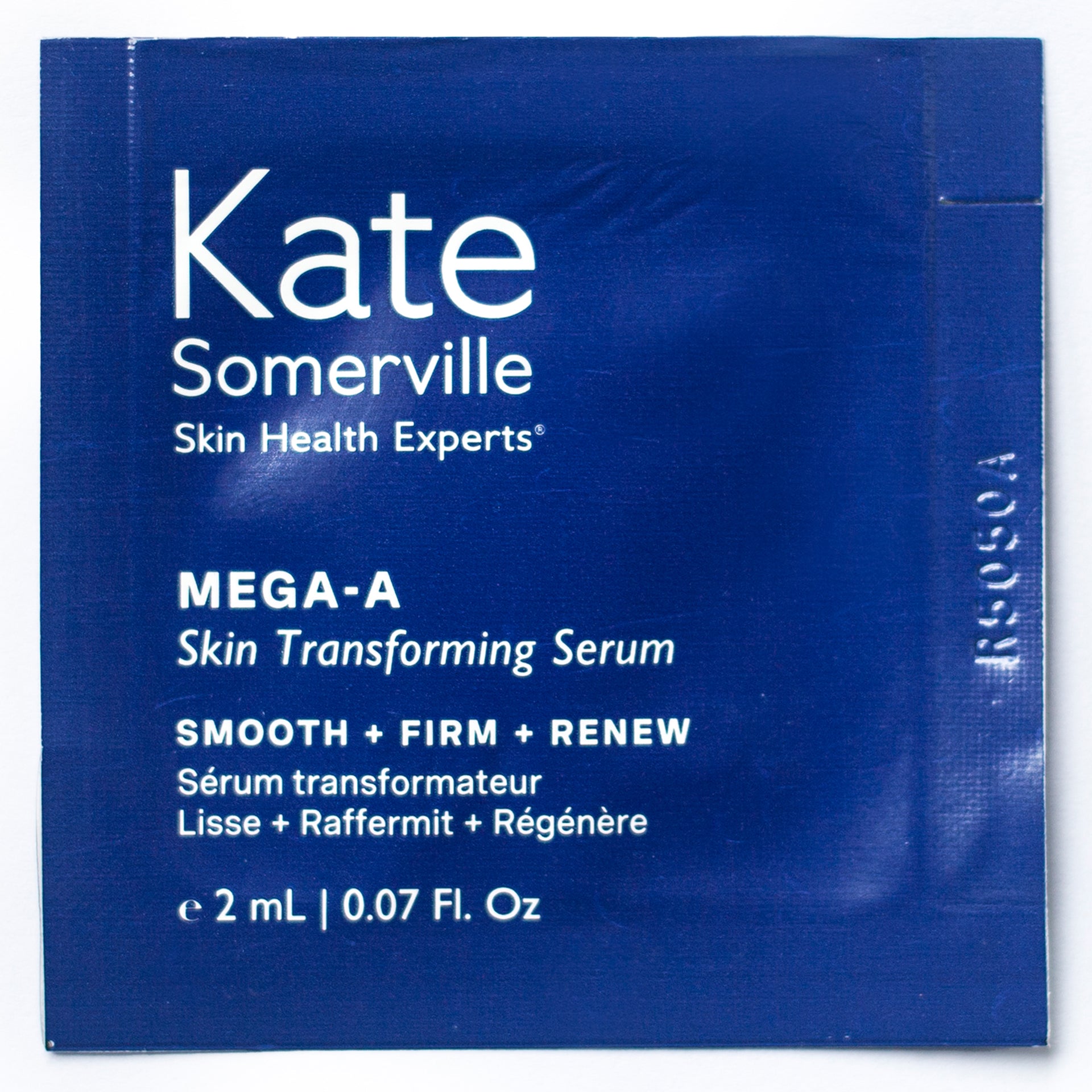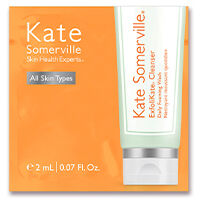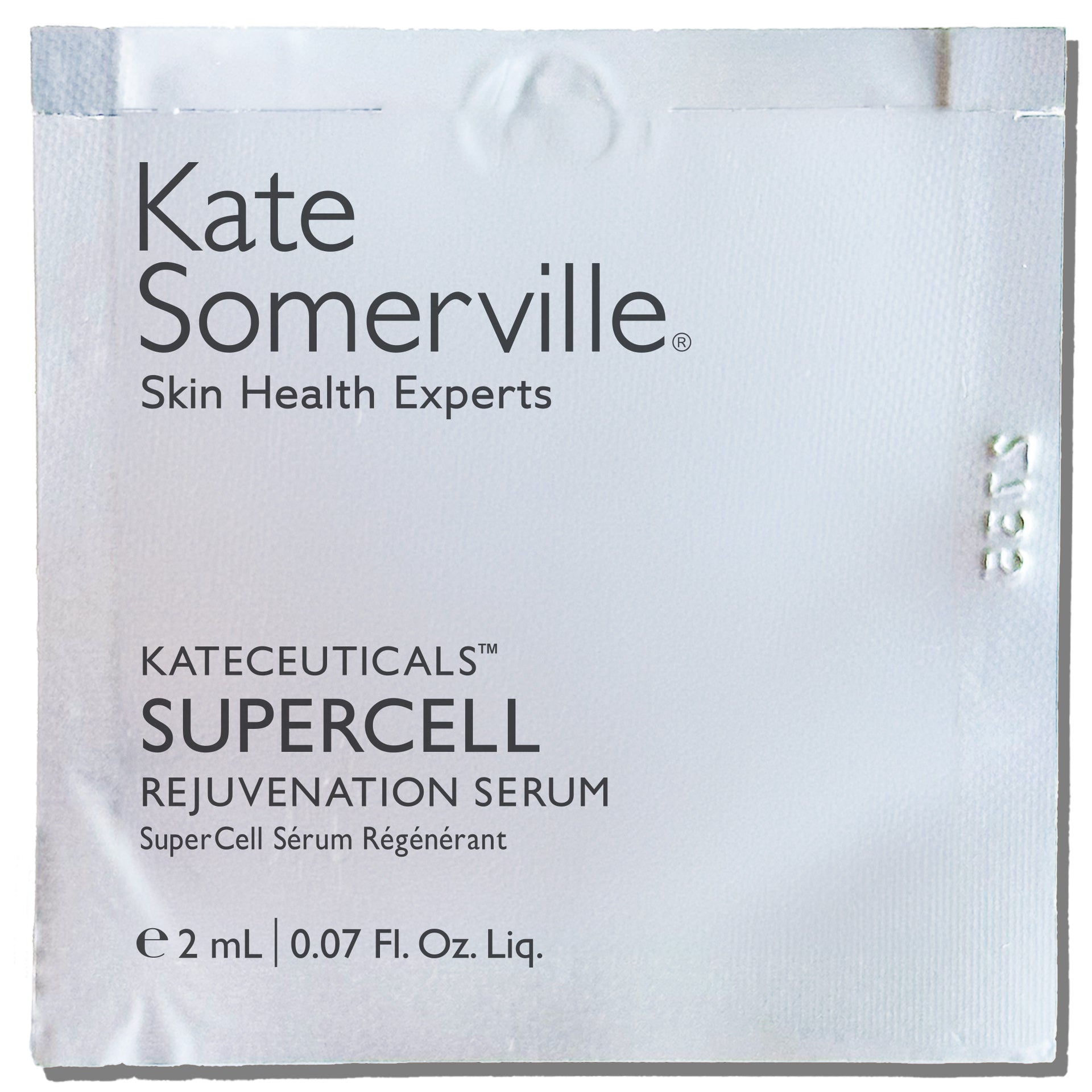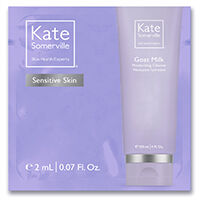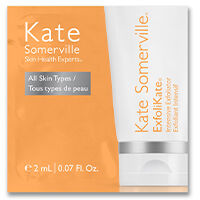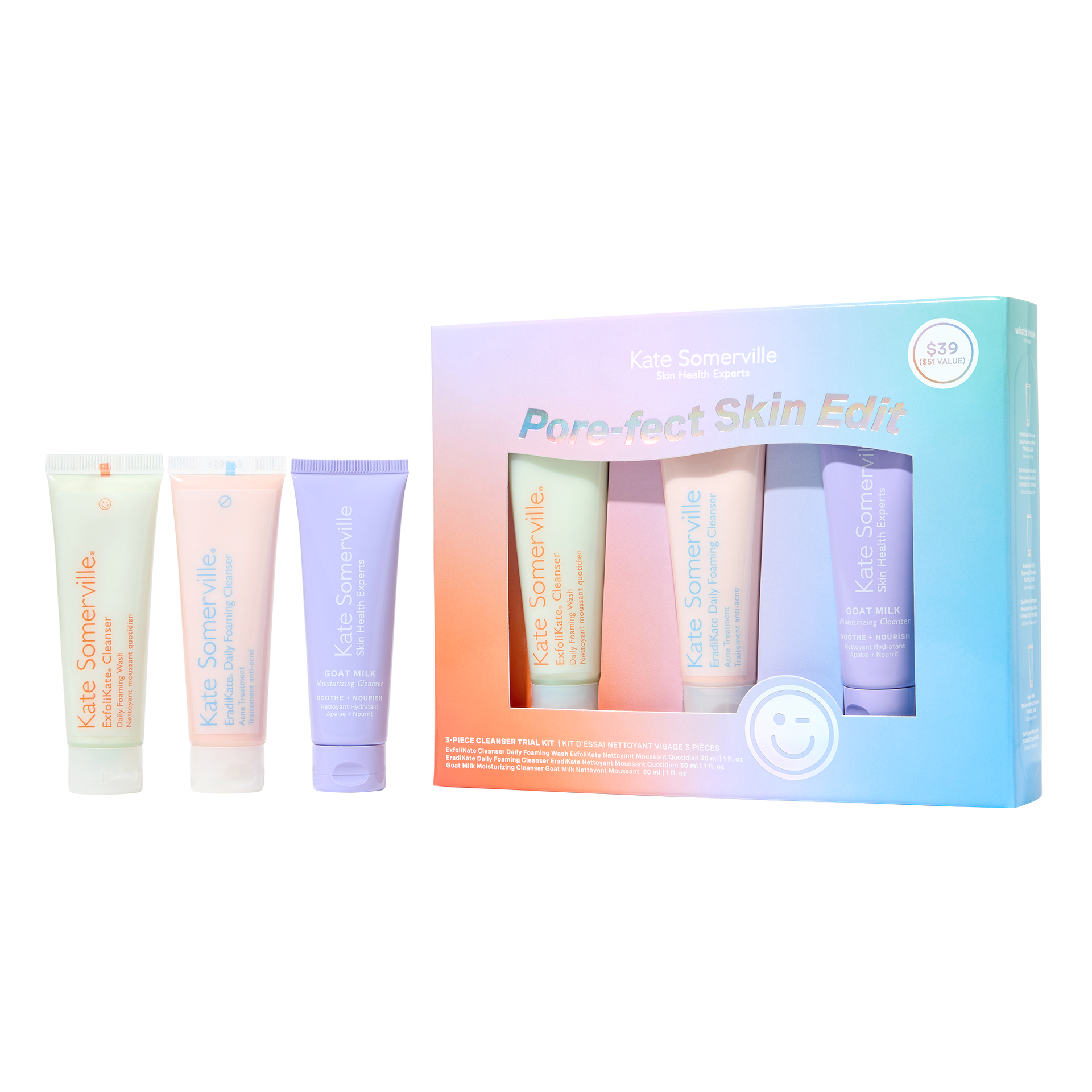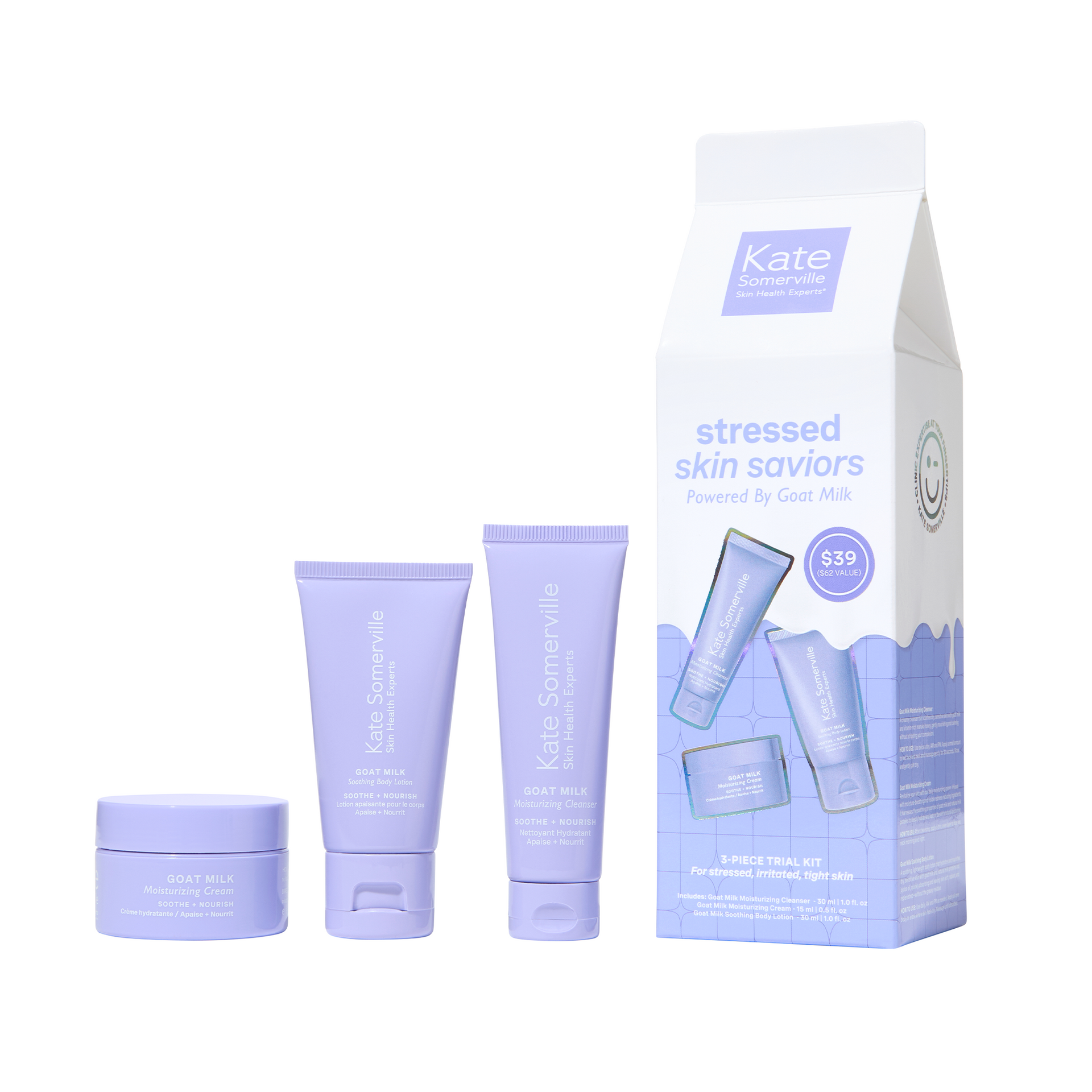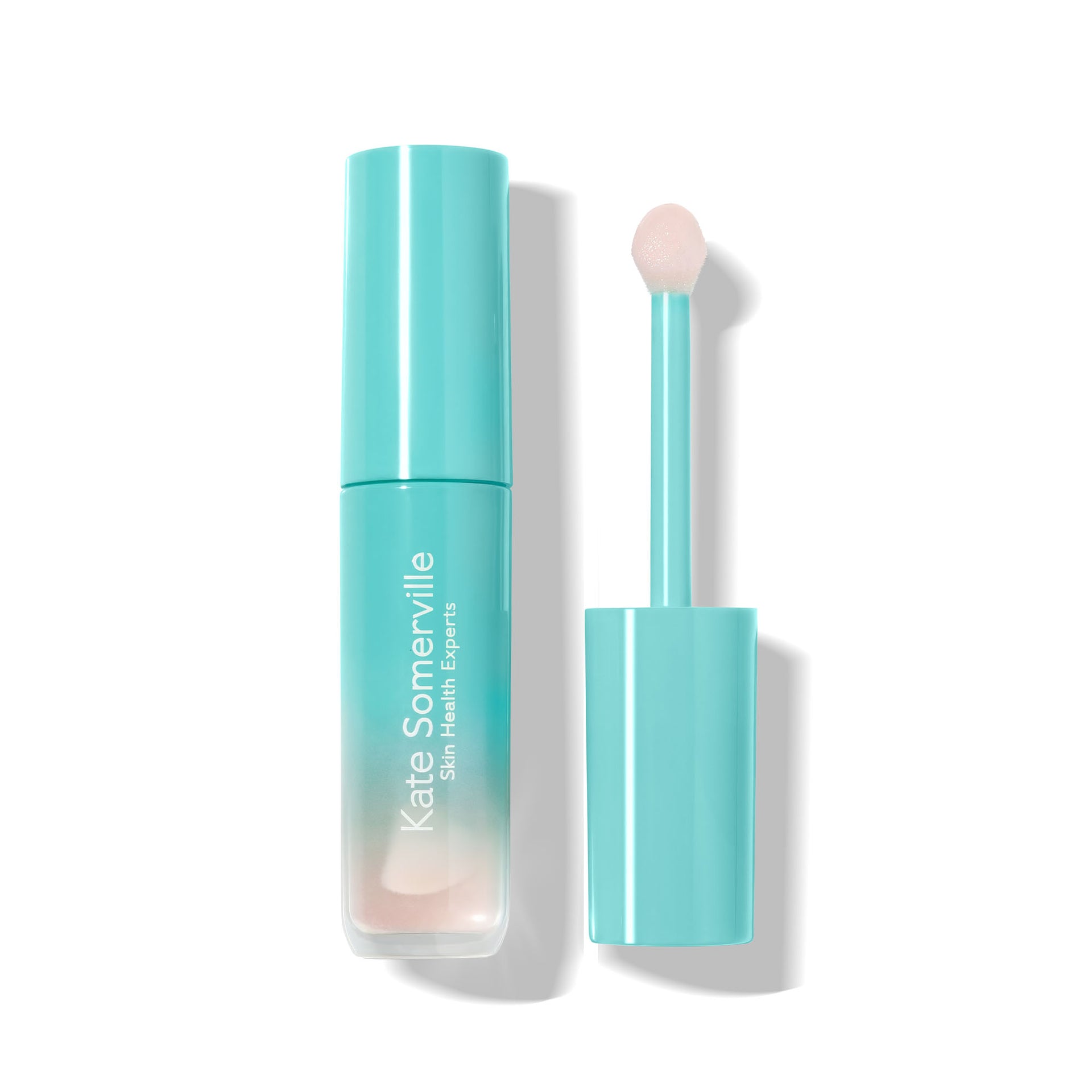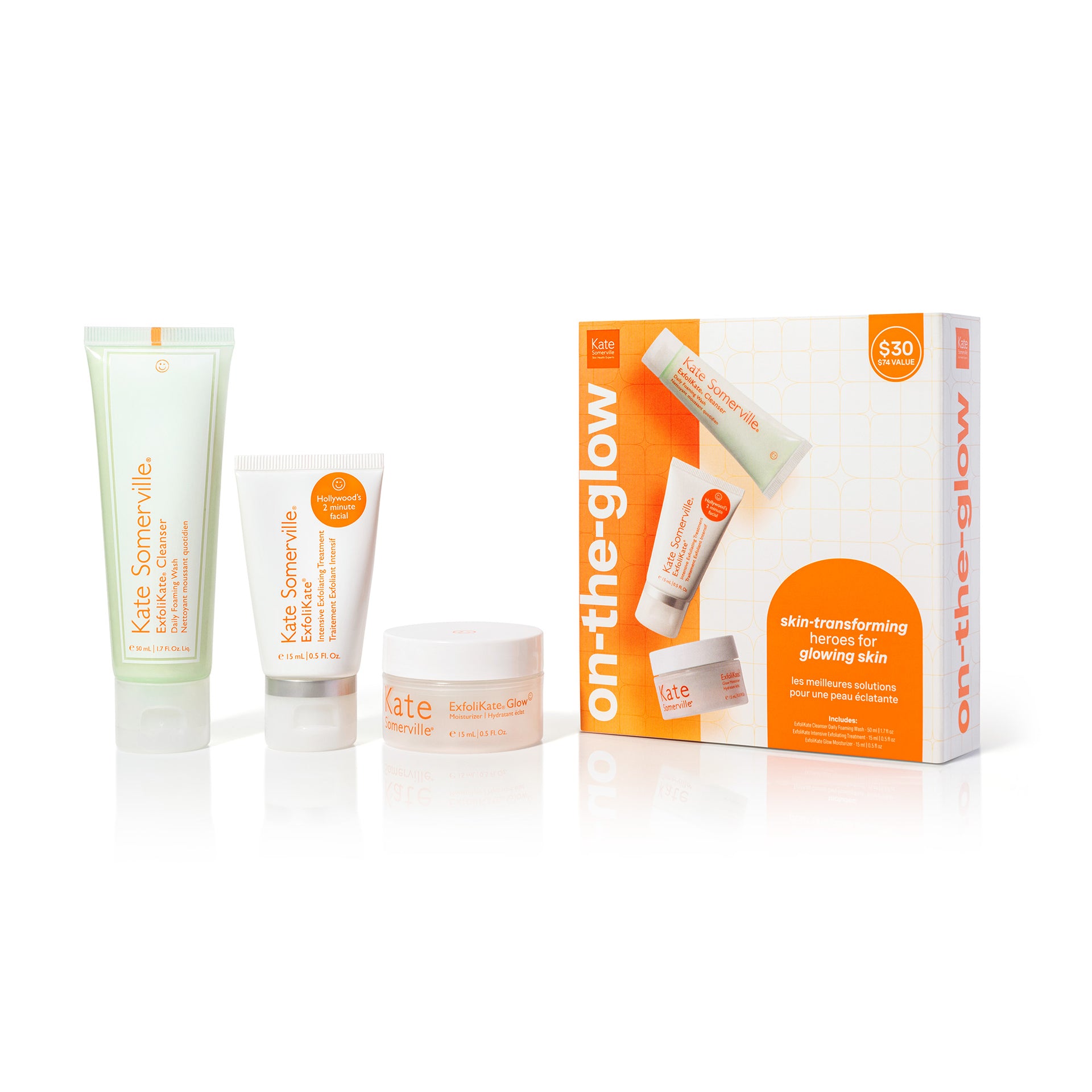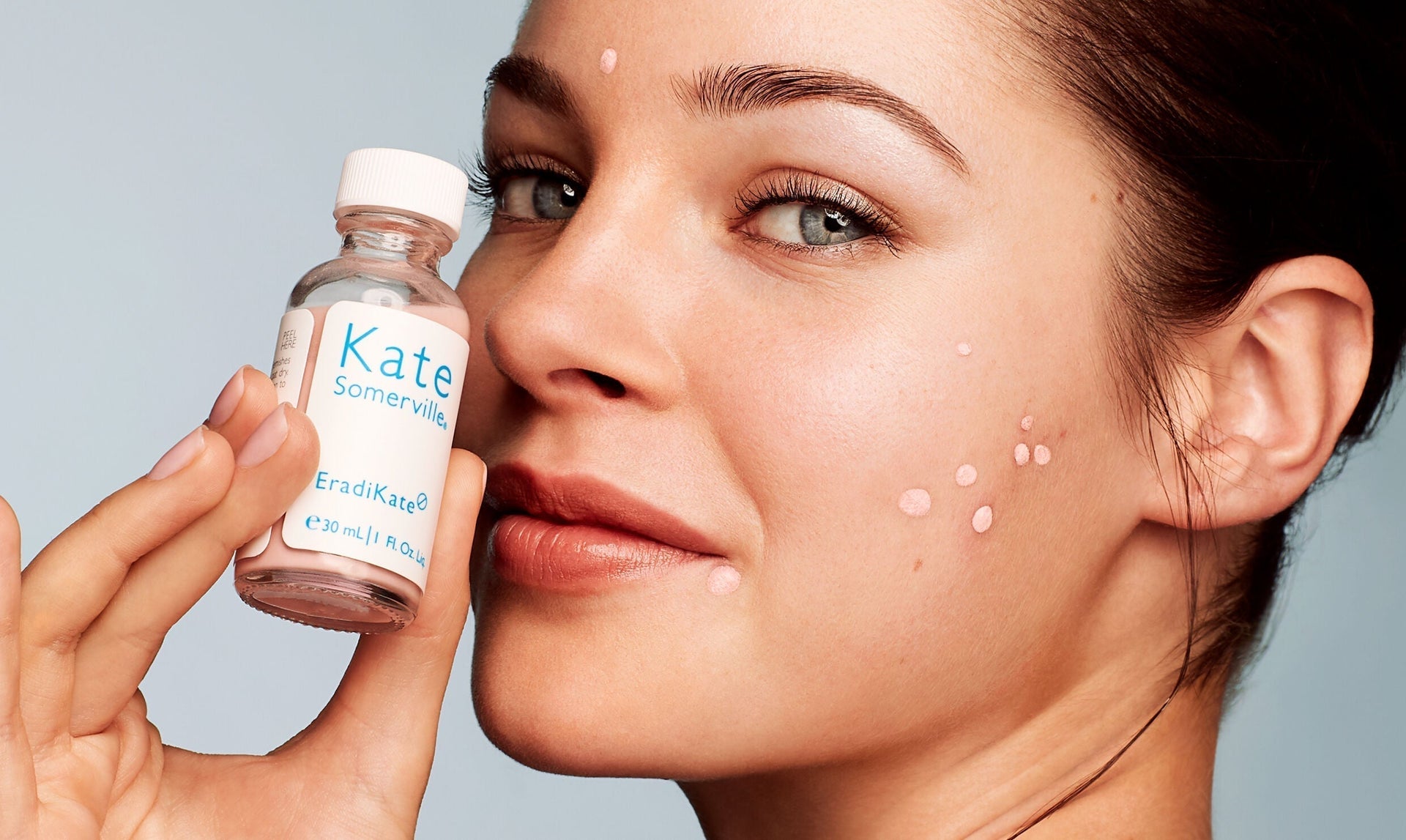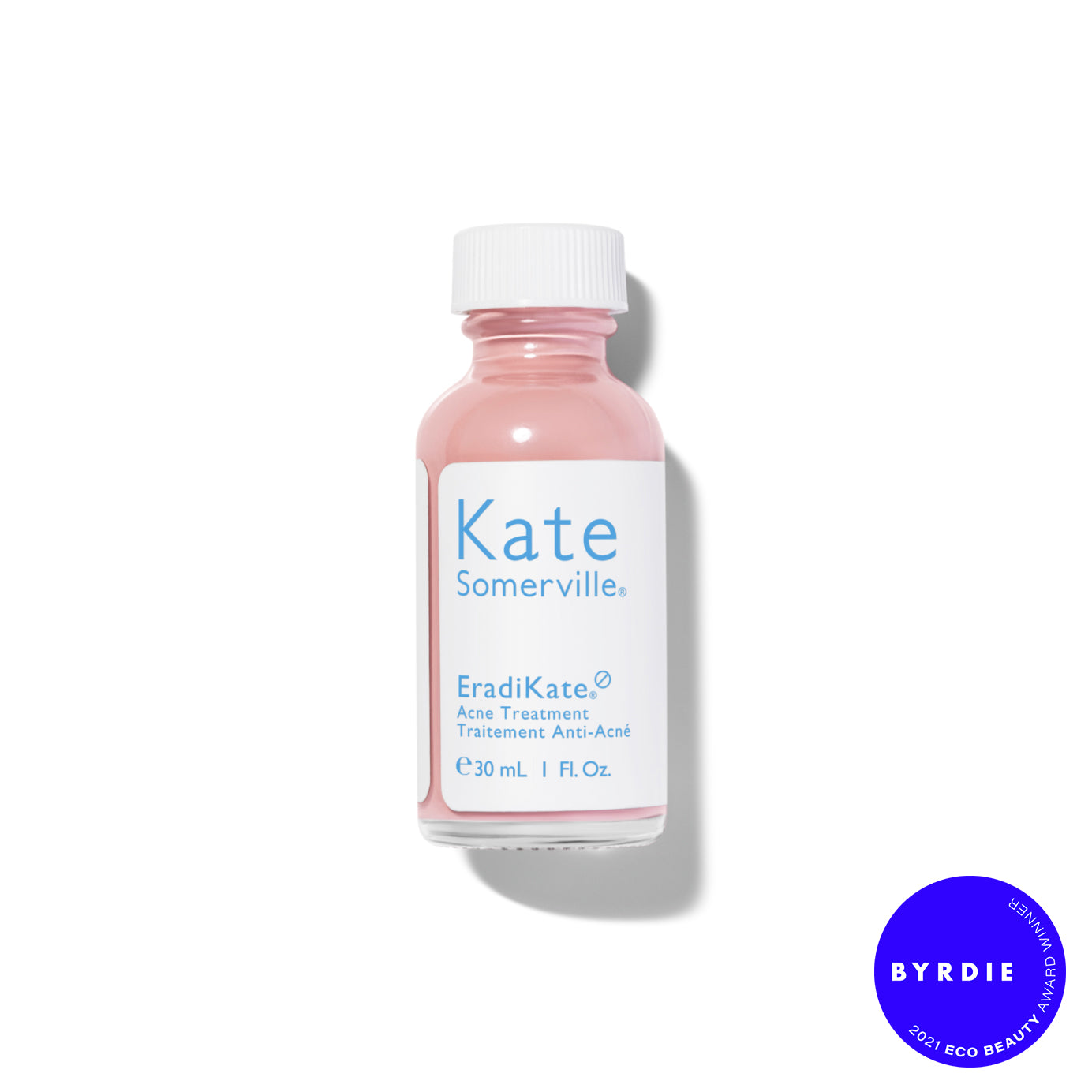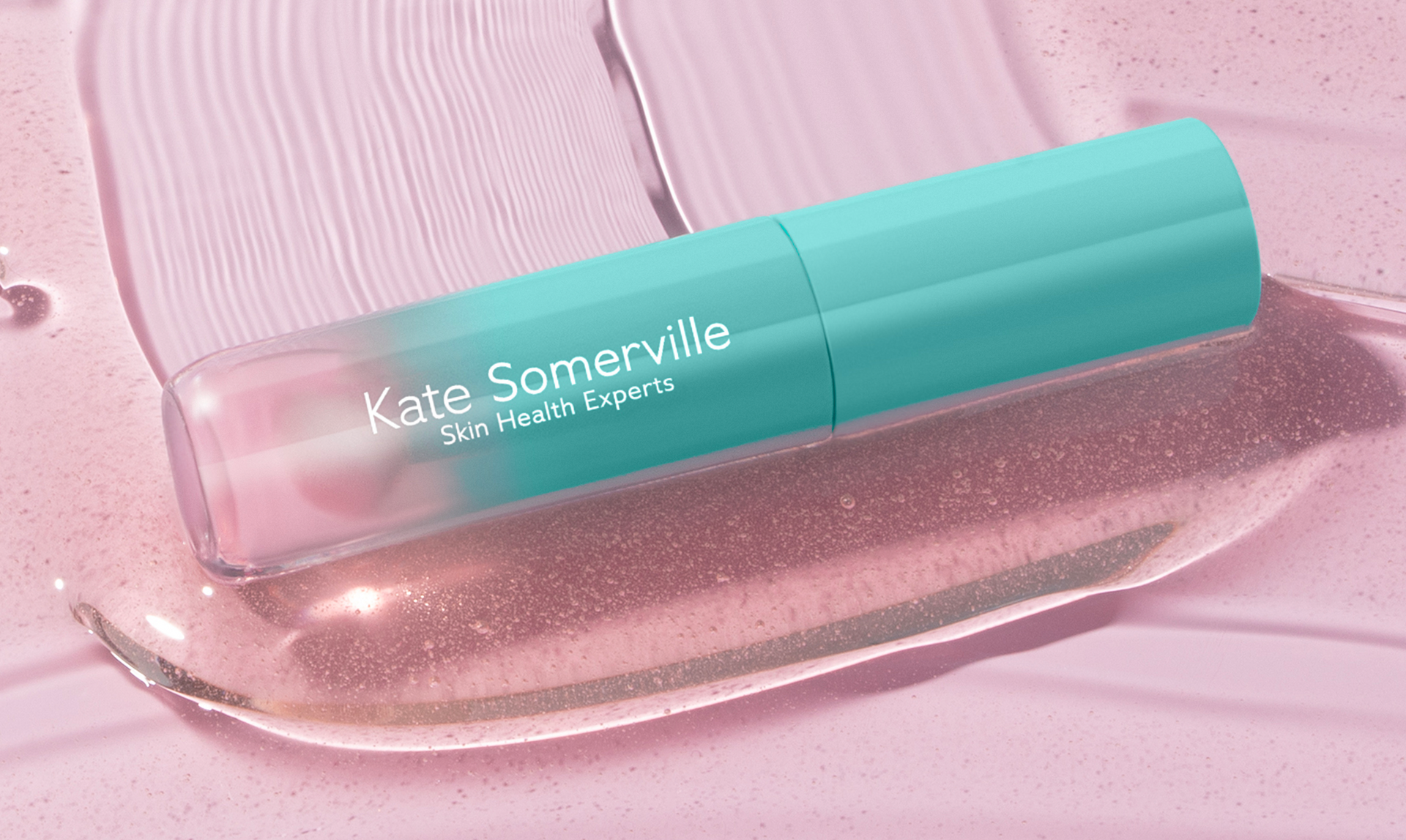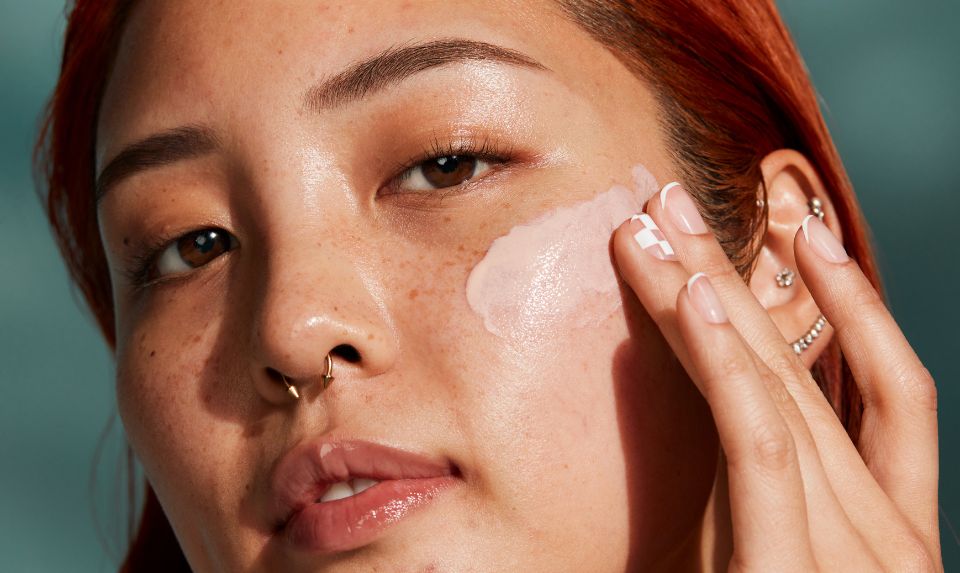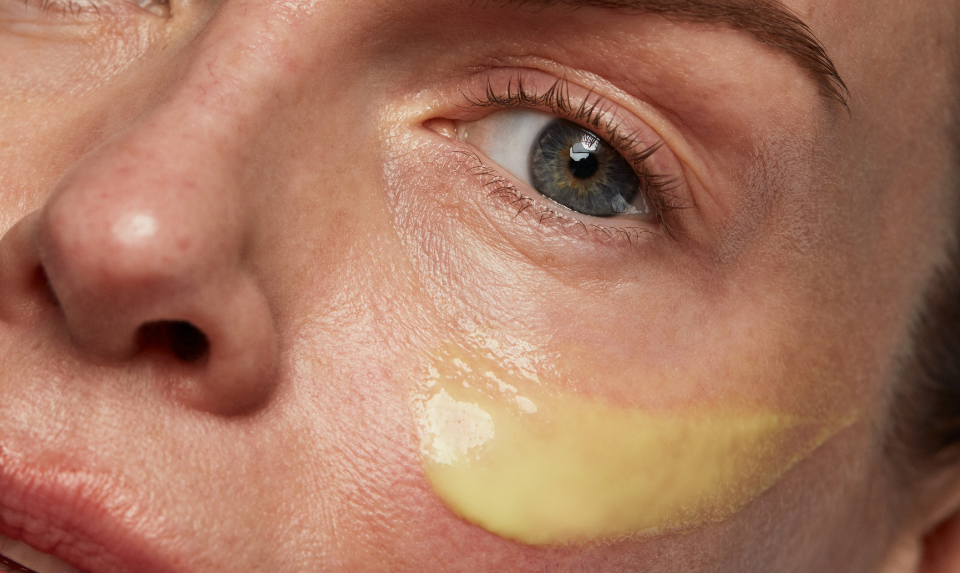Understanding Cystic Acne
Cystic acne is a highly intense form of acne that displays painful and pus-filled lesions that extend far beneath the skin's surface. This specific type of acne can be especially difficult to treat, but there are effective methods to help manage and prevent cystic acne breakouts. Our team of Skin Health Experts have hand picked the top five techniques for addressing cystic acne, like changing up your skin care products to add acne fighting ingredients like salicylic acid, benzoyl peroxide, and hydrocortisone.
Why It’s Harder to Treat
Because cystic acne forms below the skin, it’s less responsive to over-the-counter spot treatments designed for more superficial blemishes. It also carries a higher risk of scarring, especially when picked at or left untreated.
At Kate Somerville, our Skin Health Experts have spent decades helping clients treat severe acne with targeted, clinically proven formulas. Whether your breakouts stem from hormonal fluctuations or excess oil, the right routine and ingredients can help you achieve clearer, healthier skin.
Avoiding Scarring from Cystic Acne
Minimizing the potential for acne scarring is a top concern for those suffering from cystic acne. Timely intervention with effective topical treatments like retinoids, which support skin regeneration, is essential. Consistently applying sunscreen acts as a protective measure against discoloration and scarring related to sun exposure. Incorporating a good moisturizer within your skincare routine is crucial for preventing scarring by ensuring your skin retains moisture and elasticity. For more severe cases, dermatologists might suggest chemical peels or laser therapies to enhance skin texture and diminish scar presence.
Key Acne-Fighting Ingredients That Work for Cystic Acne
When treating cystic acne, ingredient selection is everything. At Kate Somerville, we rely on proven actives that work to reduce inflammation, unclog pores, and support post-acne recovery.
-
Sulfur – A powerhouse for unclogging pores and reducing excess oil without over-drying. Found in a Sulfur Acne Treatment, it’s ideal for shrinking deep blemishes.
-
Salicylic Acid – A beta-hydroxy acid that exfoliates inside pores and helps keep them clear. Also featured in ExfoliKate® Intensive Exfoliating Treatment for maximum impact.
-
Benzoyl Peroxide – An acne-fighting staple that targets bacteria directly. Available in Antibac Lotion, this ingredient is ideal for widespread breakouts.
-
Niacinamide & Zinc Oxide – Calming and brightening agents that help fade post-acne marks and soothe inflamed skin. Both are found in Acne Fading Gel.
Each ingredient is carefully balanced within Kate Somerville’s formulas to minimize irritation while maximizing results.
Your Daily Skincare Routine for Cystic Acne
Consistency is key when it comes to managing cystic acne. A twice-daily routine helps keep your skin clear, calm, and supported through every phase of a breakout.
Morning
-
Cleanse with EradiKate™ 3% Sulfur Daily Foaming Cleanser to gently reduce oil and purify skin.
-
Moisturize with a lightweight, non-comedogenic formula like Kate Somerville Oil Free Moisturizer to maintain balance without clogging pores.
-
Protect with a broad-spectrum sunscreen to guard against UV damage and hyperpigmentation.
Evening
-
Cleanse again with EradiKate™ 3% Sulfur Daily Foaming Cleanser to remove impurities and excess oil.
-
Spot Treat with EradiKate Acne Spot Treatment, applying a thin layer directly to active blemishes.
-
Moisturize with Oil Free Moisturizer, which hydrates and calms without adding heaviness.
With daily use, this regimen helps reduce active breakouts and prevent future flare-ups.
Targeted Treatments for Persistent Cystic Acne
For stubborn blemishes that just won’t budge, targeted treatments can help speed up healing.
-
Spot Treatments with Salicylic Acid: Formulated with sulfur and salicylic acid, EradiKate Acne Spot Treatment works best when used as soon as blemishes begin forming. Salicylic acid is an ideal ingredient for deep skin exfoliation and works wonders at diminishing the appearance of blackheads and whiteheads. Because of its ability to sweep away dead skin and clear pores, it’s a valuable treatment option for managing cystic acne. Apply a spot treatment containing salicylic acid to any areas where you experience breakouts. The EradiKate®️ Sulfur Acne Treatment contains 10% sulfur and 2% salicylic acid, making it a powerful spot treatment for cystic acne.
-
Post-Acne Recovery: Once breakouts subside, lingering redness and discoloration can be addressed with EradiKate Acne Mark Fading Gel, which combines niacinamide and zinc oxide to calm the skin and support clarity.
Unlike harsher solutions, these products are designed to work with your skin—not against it—while maintaining a polished, professional approach to acne care. While hydrocortisone cream is sometimes used for inflammation, our Kate Somerville solutions offer powerful alternatives without compromising the skin barrier.
Harnessing the Power of Topicals for Cystic Acne
For those battling cystic acne, topical treatments can be game-changing. With active ingredients such as benzoyl peroxide and retinoids, these treatments tackle the root of the problem. Benzoyl peroxide works diligently to banish acne-causing bacteria and reduce inflammation, whereas retinoids focus on unclogging pores and speeding up cell regeneration. When seamlessly integrated into your daily skincare routine, these products can significantly diminish the intensity of breakouts, enhancing the overall look and feel of your skin. Collaborating with a dermatologist can reveal the ultimate topical solutions tailored precisely for your skin’s distinct needs.
When to See a Dermatologist and Use Oral Medications
In severe cases of cystic acne, oral medications may be necessary to help manage breakouts. If you’ve tried the traditional methods to curb your cystic acne, it could be time to talk to a dermatologist about more intensive treatments. A dermatologist can determine which medication would be best for you and your unique skin concerns, whether it be through antibiotics, hormonal medications, or isotretinoin (Accutane). If you and your doctor decide an oral medication is the best route for your treatment, it is super important to use the medication only as directed by your dermatologist. Some medications require more closely monitoring certain vitals, so be sure to confirm with your doctor before you start taking any new medication.
For severe or persistent cystic acne, professional medical advice may be necessary. A dermatologist can recommend prescription-strength solutions such as:
-
Oral antibiotics to reduce inflammation and bacteria
-
Hormonal therapies to regulate internal triggers
-
Isotretinoin (Accutane) for long-term, severe cases
Kate Somerville’s products can be used to complement prescription treatments and help maintain skin health between visits. Always build your regimen with consistency and patience.
Additional Tips to Prevent Cystic Acne Breakouts
In addition to skincare, your daily habits play a major role in prevention.
-
Avoid touching your face: this can easily transfer bacteria and oil from your hands to your skin
-
Cleanse your face twice a day with a gentle cleanser: avoid those super abrasive facial peels or exfoliants so you don’t over-irritate your skin
-
Be sure to make a habit of removing your makeup before bed: leaving makeup on overnight periodically can clog your pores and lead to even worse breakouts
-
Always remove makeup thoroughly before bed.
-
Use gentle cleansers that won’t strip your skin barrier.
-
Stick to your routine—even when your skin seems clear.
These small but consistent actions can help reinforce the effects of your treatment plan.
Frequently Asked Questions About Cystic Acne and Kate Somerville Products
- How long does it take to see results with Kate Somerville products?
- While timelines vary, many users begin to see visible improvements with consistent use over several weeks. Visit the Reviews section for insights from real customers.
-
Can I combine Kate Somerville products with prescription treatments?
- Many people successfully integrate Kate Somerville products alongside prescribed regimens. Build your routine thoughtfully, using lightweight, supportive formulas that complement—not conflict with—your treatments.
-
Are these products safe for sensitive skin?
- Our acne solutions are developed with sensitivity in mind. Each formula is tested to minimize irritation while delivering visible results.
-
Can Kate Somerville products help with scarring?
- Yes, products like EradiKate Acne Mark Fading Gel can help reduce the appearance of post-acne marks and redness over time.
Shop Kate Somerville’s Effective Cystic Acne Treatments
Ready to take control of cystic acne with clinically proven skincare? Explore the Kate Somerville acne collection to build your personalized routine:
-
EradiKate® 10% Sulfur Acne Treatment
-
EradiKate 3% Sulfur Cleanser
-
Antibac Acne Clearing Lotion
Discover all of our Acne Products and find what works best for your skin.
Sources:
-
Moon M. How to Treat Cystic Acne - Caring for Acne Vulgaris. U.S. Dermatology Partners. Published August 28, 2020. Accessed April 7, 2023.
-
Cherney K. Polycystic Ovary Syndrome (PCOS) and Acne: Connection, Treatment, and More. Healthline. Published February 27, 2018. Accessed April 7, 2023. https://www.healthline.com/health/pcos-acne
-
Gainder S, Sharma B. Update on management of polycystic ovarian syndrome for dermatologists. Indian Dermatology Online Journal. 2019;10(2):97. doi:
Chuan SS;Chang RJ. Polycystic ovary syndrome and acne. Skin therapy letter. 2015;15(10). Accessed April 14, 2023. https://pubmed.ncbi.nlm.nih.gov/21076799/


